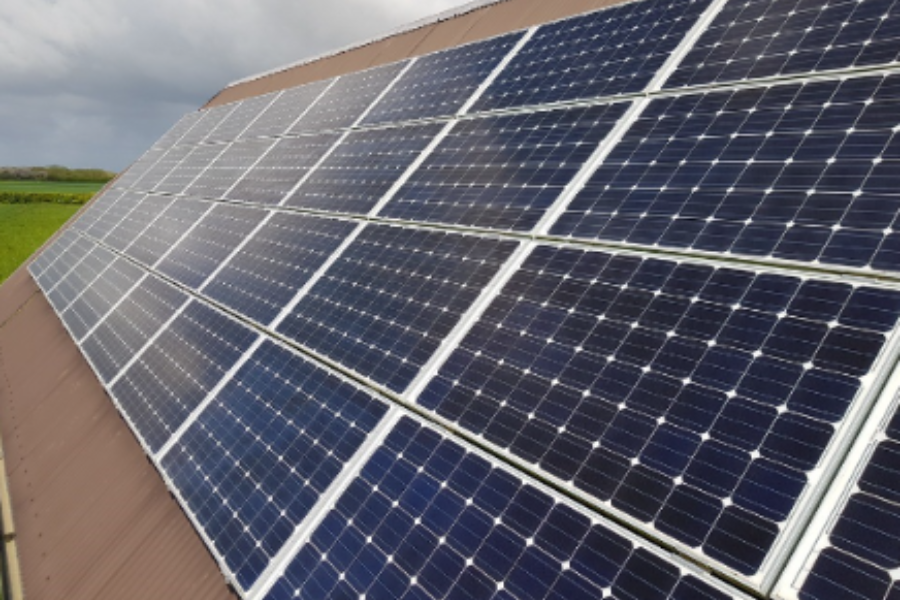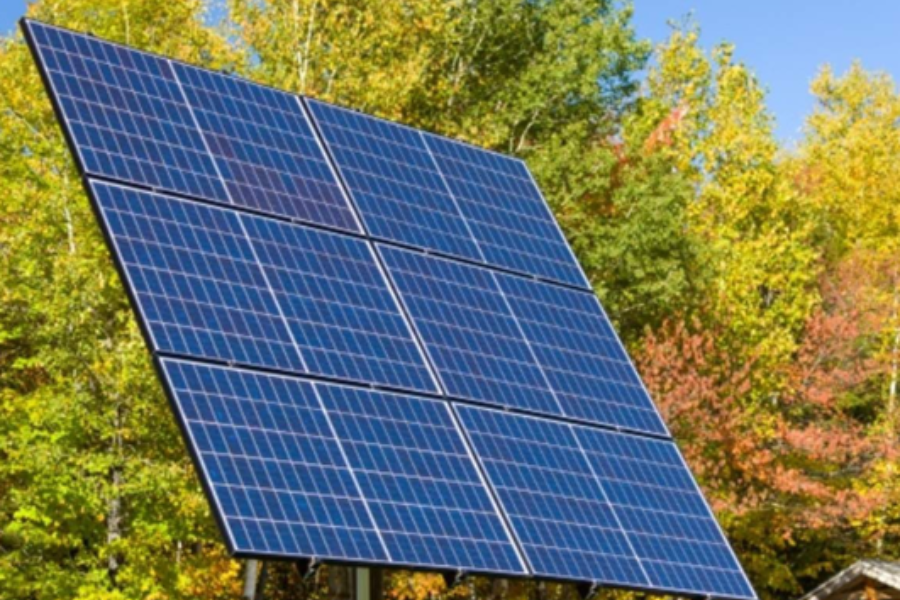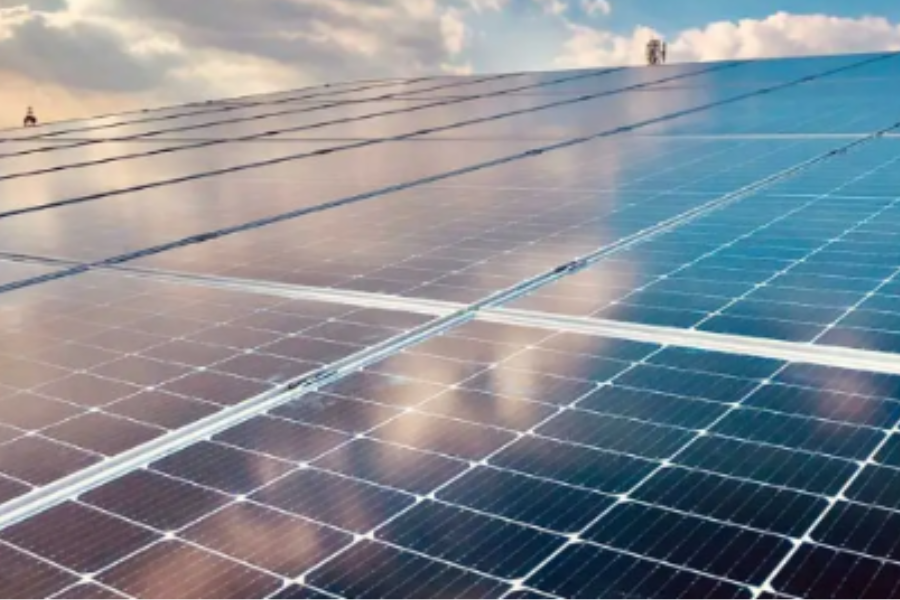Solar Panel Type Selection
Finding the Optimal Energy Solution
In an era of escalating demand for renewable energy, solar power has taken center stage. With the solar industry’s remarkable growth of nearly 50% over the past decade, driven by a surge in clean energy requirements, understanding the heart of this sector is vital: solar panels.
This comprehensive guide unveils the diverse array of solar panels available today, delving into their advantages, limitations, and ideal applications. As an electrical engineer and advocate for solar energy, I’m excited to walk you through the world of solar panel type selection and empower you to make informed choices for your energy needs.
Unveiling Solar Panels
At their core, solar panels harness solar energy to generate electricity. These panels consist of individual solar cells crafted from layers of silicon, boron, and phosphorus. The silicon wafer acts as the semiconductor, with boron and phosphorus layers generating positive and negative charges. When sunlight photons strike the panel’s surface, they release electrons from the silicon layers, creating a directional current that’s converted into usable power. This phenomenon, known as the photovoltaic effect, earns solar panels their alternate name: photovoltaic (PV) panels.
Monocrystalline Solar Panels
Crafted from single silicon crystals, monocrystalline panels epitomize efficiency and longevity. Recognizable by their black hue, they offer the highest space efficiency and durability. Yet, their production involves considerable silicon wastage, leading to a higher price point.

Polycrystalline Solar Panels
Distinguished by their square shape, polycrystalline panels are manufactured from various silicon crystals. This process minimizes wastage, making them cost-effective. However, their energy conversion efficiency and heat tolerance are slightly lower than their monocrystalline counterparts.

Passivated Emitter and Rear Cell (PERC) Panels
PERC panels are a refined version of monocrystalline cells. A rear surface passivation layer enhances its efficiency by reflecting light back into the cell and reducing electron recombination. They’re excellent for limited spaces, with a nominal increase in production costs.

Thin-Film Solar Panels
Characterized by flexibility, thin-film panels (Post Cover Image) lack rigid backing frames. They’re lighter and adaptable in size, suitable for unique installation needs. Though less efficient than crystalline panels, they offer design versatility.
Comparing Panel Efficiency
When it comes to solar panels, efficiency is a key metric that directly influences the amount of energy a panel can convert from sunlight into usable electricity. Let’s take a closer look at how different types of solar panels compare in terms of efficiency:
PERC Panels: Pushing Efficiency Boundaries
PERC (Passivated Emitter and Rear Cell) panels have emerged as a significant advancement in solar technology. With an efficiency rating of around 25%, these panels stand as some of the most efficient on the market. The secret to their exceptional efficiency lies in their innovative design.
The passivation layer in the rear surface of PERC cells plays a crucial role. This layer enhances efficiency in several ways:
1. Increased Absorption
The passivation layer reflects light back into the cell, allowing more solar radiation to be absorbed by the solar panel. This boosts the overall energy conversion process.
2. Minimized Electron Recombination
By reducing the tendency of electrons to recombine, the flow of electrons within the cell is optimized. This enhances the panel’s ability to generate and sustain an electric current.
3. Reflection of Higher Wavelengths
Solar panels have limitations in absorbing certain wavelengths of light, particularly those over 1,180nm. These wavelengths can’t be absorbed and instead contribute to heating the panel’s back sheet. The passivation layer in PERC panels reflects these higher wavelengths, preventing them from heating the back sheet and reducing efficiency.
Monocrystalline Panels: High-Efficiency Standard
Monocrystalline panels are another category known for their impressive efficiency. These panels typically have an efficiency rating of over 20%. Their efficiency is derived from the use of single pure silicon crystals to create solar cells. The uniformity of the crystal structure contributes to the panel’s ability to convert sunlight into electricity with high efficiency.
Monocrystalline panels are often recognized by their dark black color, which is a result of their pure silicon composition. While they offer remarkable efficiency, it’s worth noting that the production process for monocrystalline cells can result in a waste of silicon, sometimes reaching over 50%. This factor contributes to their higher cost compared to other panel types.
Polycrystalline Panels: A Balance of Efficiency and Affordability
Polycrystalline panels strike a balance between efficiency and affordability. They are made from different silicon crystals melted and poured into molds, which gives them their characteristic square shape. Their efficiency typically falls between 15-17%, making them a competitive option for residential and commercial installations.
Although polycrystalline panels are less efficient than monocrystalline panels, they offer cost savings due to their simpler manufacturing process and reduced silicon wastage. Their affordability makes them an attractive choice for those seeking a balance between efficiency and budget.
Thin-Film Panels: Flexibility with Lower Efficiency
Thin-film panels offer a different approach to solar energy generation. They are characterized by their flexibility and lightweight. However, their efficiency is comparatively lower than crystalline panels.
Let’s explore the efficiency ratings of different types of thin-film panels
1. Copper Indium Gallium Selenide (CIGS)
Among thin-film panels, CIGS panels exhibit the highest efficiency, ranging from 13-15%. These panels are known for their efficiency even in low-light conditions and their potential for flexible installation.
2. Cadmium Telluride (CdTe)
CdTe panels have an efficiency range of 9-11%. They are notable for their low production cost and environmentally friendly characteristics. However, the toxic nature of cadmium poses challenges in terms of recycling.
3. Amorphous Silicon (a-Si)
Amorphous silicon panels have the lowest efficiency among all panel types, typically ranging from 6-8%. Despite their lower efficiency, they are well-suited for specific applications that require minimal power, such as small electronics or low-power devices.
In summary, when comparing panel efficiency, it’s evident that PERC and monocrystalline panels lead in terms of high efficiency. Polycrystalline panels offer a balanced approach between efficiency and affordability, while thin-film panels prioritize flexibility but come with lower efficiency levels. Your choice of solar panel should consider your specific energy needs, budget, and installation requirements.
Comparing Panel Power Capacity
When it comes to evaluating the power capacity of different types of solar panels, factors such as the construction of the cells and their arrangement play a significant role. Let’s delve into how various panel types differ in terms of their power generation capabilities.
Monocrystalline Panels
Monocrystalline solar panels boast the highest power capacity among all panel types. This advantage stems from their unique single-crystal construction, which allows them to achieve a higher output rating within a compact design. Most monocrystalline panels are known for delivering exceptional power generation per cell capacity, often reaching up to an impressive 300 watts of power capacity. This efficiency is a result of the advanced technology behind monocrystalline cells, making them a sought-after choice for those aiming to maximize energy production within limited space.
Polycrystalline Panels
In the realm of power capacity, a standard 60-cell polycrystalline panel is capable of producing a range of 240 to 300 watts. Polycrystalline panels achieve this power generation by utilizing silicon fragments from the manufacturing process, which are then molded into cells. While they are not as power-efficient as monocrystalline panels, polycrystalline panels strike a balance between performance and affordability.
Thin-Film Panels
Unlike crystalline panels, thin-film panels do not come in uniform sizes, which makes evaluating their power capacity more complex. Due to their thin and flexible nature, thin-film panels lack the standardization seen in crystalline panels. Their power capacity can vary significantly based on the physical dimensions of the panel. However, as a general trend, conventional crystalline panels tend to outperform thin-film panels of comparable size in terms of power output. This is because thin-film panels are designed to be lightweight and flexible, which can lead to trade-offs in power generation efficiency.
In summary, the power capacity of solar panels varies depending on the technology used and the design of the panels. Monocrystalline panels lead the pack in terms of power efficiency due to their single-crystal structure, followed by polycrystalline panels that offer a good balance between performance and cost. Thin-film panels, while versatile in terms of form factor, generally exhibit lower power capacity compared to traditional crystalline panels. When selecting a panel type, it’s essential to consider your energy requirements, available space, and budget to make an informed decision that aligns with your solar energy goals.
Considering Panel Costs
When evaluating solar panel options, cost is a crucial factor that can greatly influence your decision-making process. Different panel types come with varying price points, each reflecting their manufacturing processes, efficiency, and materials used. Let’s delve into the cost considerations associated with different types of solar panels.
Monocrystalline Panels
Monocrystalline panels are often considered a premium choice, but this premium comes with good reason. The complex manufacturing process involved in creating single-crystal silicon wafers contributes to the higher cost of monocrystalline panels. These panels are meticulously crafted from a single, high-purity silicon crystal, which enhances their energy efficiency and overall performance. While the upfront cost may be higher, the energy savings and durability they offer over the long term can justify the investment for many homeowners.
Polycrystalline Panels
Polycrystalline panels present a more budget-friendly option compared to monocrystalline panels. Their manufacturing process involves melting and molding silicon fragments into cells, which simplifies production and reduces costs. This makes polycrystalline panels a practical choice for those seeking a balance between affordability and reasonable performance.
Thin-Film Panels
Among thin-film panels, the cost varies based on the material used. Copper indium gallium selenide (CIGS) panels tend to be the most expensive within the thin-film category, followed by panels made of Cadmium telluride (CdTe) and Amorphous silicon (a-Si). The materials and specialized manufacturing techniques involved in creating thin-film panels contribute to their cost. It’s worth noting that thin-film panels offer advantages in terms of flexibility and ease of installation, which can mitigate some of the cost considerations.
Installation and Labor Costs
While panel costs are a significant factor, it’s essential to consider additional expenses related to installation and labor. Regardless of the panel type you choose, there will be associated costs for the installation process, including mounting, wiring, and connecting the panels to your electrical system. These costs can vary depending on factors such as the complexity of the installation and local labor rates.
In conclusion, the cost of solar panels varies based on the technology and materials used in their construction. Monocrystalline panels tend to be more expensive due to their intricate manufacturing, while polycrystalline panels offer a more economical option. Thin-film panels, with their material diversity, present a range of costs, with CIGS panels typically ranking highest in price. It’s essential to not only consider the upfront panel cost but also account for installation and labor expenses when making a comprehensive assessment of the overall investment. Balancing the initial cost with long-term savings and energy efficiency can help you make a well-informed decision that aligns with your budget and sustainability goals.
Additional Factors for Solar Panel Type Selection
Temperature and Thin-Film Panels
Thin-film panels possess a distinct advantage when it comes to performance in hotter environments. This advantage stems from their temperature coefficients. A temperature coefficient measures a solar panel’s decrease in power output as the temperature rises. In essence, it accounts for how well a panel can handle high temperatures without significant loss in energy generation.
Thin-film panels, with their unique construction and design, generally have a lower temperature coefficient compared to crystalline panels. This means that as the temperature rises, the reduction in power output for thin-film panels is comparatively smaller. This characteristic makes thin-film panels well-suited for regions with consistently high temperatures or locations that experience intense sunlight throughout the year.
Fire Rating and Panel Installation
Safety is of paramount importance when it comes to solar panel installation. The updated International Building Code mandates that solar panels should match the fire rating of the roof they are installed on. This requirement ensures that the solar modules do not exacerbate the spread of flames in case of a fire. In regions with high fire risk or wildland-urban interface areas, this regulation becomes especially crucial.
Some states, like California, go even further by requiring the entire photovoltaic (PV) system, including the racking system, to have the same fire rating as the roof. This comprehensive approach ensures that the entire system is designed to minimize fire-related risks.
By adhering to fire rating regulations, solar panel installations contribute to a safer environment for homeowners, communities, and first responders.
Hail and Hurricane Rating: Protection Against the Elements
When it comes to the impact of harsh weather conditions, crystalline panels exhibit superior resilience compared to thin-film panels.
Hail Rating: Crystalline panels are rigorously tested to withstand hail impacts. These tests involve dropping solid steel spheres onto the panels to simulate hail impact. The thicker construction of crystalline panels enables them to endure hail hitting at speeds of up to 50mph. In contrast, thin-film panels, due to their thin and flexible nature, typically have a lower hail rating.
Hurricane Rating: While there isn’t a formal solar classification rating for hurricanes, the Department of Energy has recommended design specifications to enhance solar panels’ resilience against severe weather events. These specifications include using modules with high snow and wind loading ratings, robust fasteners, and sturdy frame rail systems.
By ensuring that solar panels can withstand hail, hurricanes, and other adverse weather conditions, homeowners can invest in solar energy with confidence, knowing that their panels will stand up to the elements.
Light-Induced Degradation (LID) and Crystalline Panels
Crystalline panels, particularly monocrystalline and polycrystalline types, may initially experience a phenomenon called Light-Induced Degradation (LID). LID is a temporary reduction in panel efficiency during the first few hours of sun exposure. It occurs as sunlight reacts with oxygen traces left over from the manufacturing process, leading to changes in the silicon lattice structure.
The good news is that LID is temporary and typically stabilizes after the initial period of exposure to sunlight. Manufacturers are continuously improving production processes to minimize LID effects. As a result, the impact of LID on overall panel performance is diminishing over time.
Understanding LID is important for prospective solar panel owners, as it highlights the need for patience during the initial period of panel operation. Over the long term, the effects of LID are not a significant concern and are outweighed by the benefits of clean and sustainable solar energy generation.
Making the Choice
For limited spaces, efficient monocrystalline or PERC panels are ideal. Larger properties can benefit from cost-effective polycrystalline panels, though efficiency trade-offs exist. Thin-film panels suit unconventional installations. Each panel type caters to specific needs, and a comprehensive evaluation ensures a tailored choice.
Remember, solar panels are a long-term investment. As you embark on your solar journey, dive into research and seek expert advice to secure a solar panel type that aligns with your energy goals and sustains a greener future.
Conclusion
Selecting the right solar panel type is a crucial step in harnessing the power of solar energy. Each type has its own set of advantages and considerations. By assessing factors such as efficiency, budget, space, and environmental impact, you can make an informed decision. It is recommended to seek local expert advice to select a solar panel type that aligns with your environment, energy goals and sustains a greener future.
FAQs on Solar Panel Type Selection
1. Are monocrystalline panels always the best choice due to their high efficiency?
Not necessarily. While monocrystalline panels are highly efficient, factors such as available space and budget should also be considered. Polycrystalline or other types might offer better cost-effectiveness for larger installations.
2. Can I mix different types of solar panels in one system?
Mixing different types of panels can lead to varying energy outputs due to differences in efficiency. It’s advisable to consult with a solar professional before combining panels.
3. Are thin-film panels suitable for residential use?
Thin-film panels can be used for residential installations, but their lower efficiency might require more space to generate the same amount of energy as traditional panels.
4. Which panel type is best for a hot climate?
Cadmium Telluride (CdTe) panels perform well in hot climates due to their heat tolerance. They can maintain efficiency even in high-temperature environments.
5. Can hybrid panels be customized for specific energy needs?
Yes, hybrid panels can be customized to balance efficiency and cost-effectiveness based on your energy consumption goals. Consult a solar expert to design a tailored solution.




